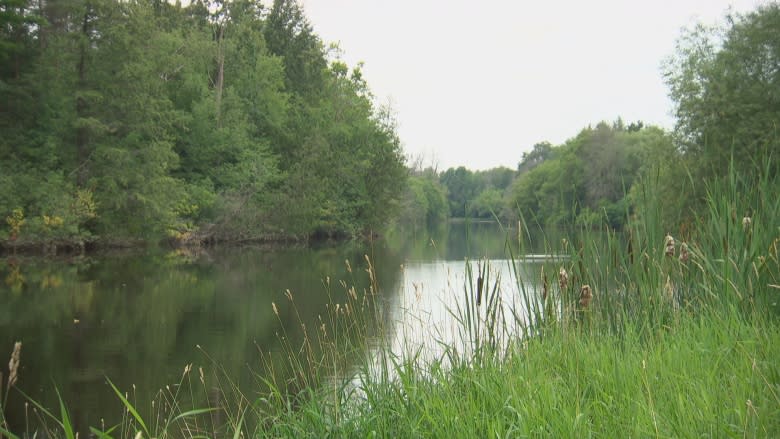Rooting out latest invasive plant to strike Ottawa a race against time
Conservation experts in Ottawa are waging war on Japanese knotweed, an aggressive, invasive plant species which has taken root in more than a dozen places on the city's shorelines.
If it's not controlled, biologists warn the foreign plant — strong enough to break through walls and roads — will spread, displacing wildlife and crowding out native plant species in many areas.
"It grows so aggressively that it overpowers and overtakes shoreline areas where native vegetation would normally establish," said Rosario Castanon, who is co-ordinating the Rideau Valley Conservation Authority's efforts to control the weed.
"It's also physically a barrier to wildlife. Animals that are trying to access the waterway or that would have a nesting habitat on the shore no longer have this area."
The agency has two ongoing projects — one at Sawmill Creek in the south end of Ottawa and the other along the Jock River in Barrhaven.
Restricted plant has spread across Canada
Reaching heights of one to three metres with hollow, notched purple stems, the weed resembles a bamboo plant.
The semi-woody perennial plant, native to eastern Asia, was introduced to North America in the 1800s as an ornamental species. It was also used for erosion control.
The weed has since spread across much of Canada and United States, and was first identified in Ottawa about four years ago.
Ontario has regulated Japanese knotweed as restricted under the Invasive Species Act which makes it illegal to import, grow, deposit, release, buy or sell the plant.
Arduous task yields progress
Volunteers with the Rideau Valley Conservation Authority's City Stream Watch has been manually cutting and digging out the plant alongside Sawmill Creek for three years.
But Castanon, who co-ordinates the program and led its latest eradication effort last Saturday, says the volunteers are seeing progress.
"This year we came back and in one day — in three hours — we managed to dig up all the plants that were left. So it's getting a little easier to manage over time."
The plant is drought and flood tolerant, with a vigorous root system that stretches ten metres long from the parent stem and can break through asphalt and concrete.
Patience and persistence are needed.
"Well," Castanon said with a laugh, "you have to look at it as small battles within a big war."
Dense thickets strangle native species
Another patch of the weed, which runs alongside the Jock River, measures approximately 12 metres long and seven metres wide.
Sunlight can't penetrate through the dense, three-metre-high thicket.
Since the Jock River patch is located on City of Ottawa property, the Rideau Valley Conservation Authority has to wait for permits to cut down the weeds.
Then, they'll cover it with a black tarp to starve it of sunlight, eventually killing it. After that, the agency says it will plant native species to restore the shoreline to the way it should be.
It hopes the municipal permit comes through before the weed creates its white flowers and goes to seed.
Others work to prevent spread
Other organizations, including the Ontario Federation of Anglers and Hunters, are helping the authority get rid of the Japanese knotweed.
Brady McGlade says the federation works to preserve healthy rivers and forest areas so its members can continue to hunt and fish.
He's helping Castanon let people know about the dangers of knotweed.
"It's a lot easier preventing than eradicating the weed," said McGlade. "We raise awareness about cleaning your boat, because that's an easy way to spread invasive species."
He also suggests cleaning your clothes and vehicle after you're in an area with the invasive plan, since the seeds can blow to another area to create a new patch.





